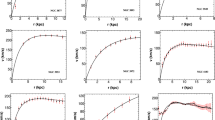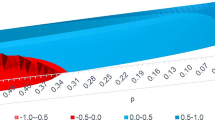Abstract
Up to now, the rotational velocities of galaxies are not clearly understood and the experimental Tully Fisher rule, linking the total galactic mass to the fourth power of the velocity, through an acceleration coefficient of about 10−10 m/s2 has not found a deep theoretical explanation. Tentative proposals (MOND theory of a modified Newton’s law and extraneous dark matter) do not bring a definite clarification. We propose here a new approach to this problem, without exotic matter and using the classical Newton force. But we introduce a new additional universal acceleration, which could represent a universal expansion law valid at the scale level of a galaxy. We show that this hypothesis leads to a good description of the observed variations of the galactic transverse velocity. It can be considered as a consequence of the Scale Expansion Cosmos theory (SEC) introduced by J. Masreliez, but we postulate that the space expansion acceleration universally applies at any scale. We obtain a formal derivation of the Tully Fisher law, linking the constant galactic transverse velocity to its total mass, via the universal minimum acceleration. We derive a good estimate of the TF acceleration coefficient and show that expansion should be proportional to the square root of the local volumic mass density. Our conjecture is in fact a new dynamics principle which could be applied to many other physical problems at different scales. Applying it to the range of the solar planet system confirms the well known Kepler laws, at least as a valid approximation for the order of magnitude of the solar system.

Similar content being viewed by others
Notes
Simple gravitation would predicts \(\gamma = \varGamma (r) = \frac{v_{\theta}^{2}}{r}\) and \(v_{\theta}^{2} = r\varGamma (r)\) should be radius dependant. The case \(\varGamma (r) = \frac{GM(r)}{r^{2}}\) should predict \(v_{\theta}^{4} = \gamma GM\) where v θ , M and γ are radius dependant.
Equation (26) could be extrapolated, estimating the corresponding “local” volumic mass densities for the solar system (M S over a sphere of 4 light-years radius) and for the galaxy (M t over a sphere of 15 kpc radius) which gives the same order of magnitude.
References
Bienaymé, O.: Astron. Astrophys. 341, 86 (1999)
Binney, J., Tremaine, S.: Galactic Dynamics p. 43. Princeton University Press, Princeton (1994)
Bottema, R.: Astron. Astrophys. 388, 809 (2002)
Bottema, R., Verheijen, M.A.W.: Astron. Astrophys. 388, 793 (2001)
Cardone, V.F., Angus, G., Diaferio, A., Tortora, C., Molinaro, R.: Mon. Not. R. Astron. Soc. 412, 2617 (2011)
Cooperstock, F.I., Tieu, S.: Int. J. Mod. Phys. A 22, 2293 (2007)
Courteau, S., Andersen, D.R., Bershady, M.A., MacArthur, L.A., Rix, H.W.: Astrophys. J. 594, 208 (2003)
Feng, J.Q., Gallo, C.F.: J. Cosmol. 6, 1373 (2010)
Fuchs, B., Böhl, A., Möllenhoff, C., Ziegler, B.L.: Astron. Astrophys. 427, 95 (2004)
Masreliez, J.C.: Apeiron 11, 99 (2004a)
Masreliez, J.C.: Apeiron 11, 1 (2004b)
Masreliez, J.C.: Astrophys. Space Sci. 299, 1 (2005)
Masreliez, J.C.: The Progression of Time, Appendix III (2012)
McGaugh, S.S.: Annu. Rev. Astron. Astrophys. 40, 263 (2002)
McGaugh, S.S.: Phys. Rev. Lett. 106, 303 (2011)
Minguzzi, E.: New Astron. 12, 142 (2006)
Mizony, M.: La relativité générale aujourd’hui ou l’observateur oublié. Aléas, Paris (2003)
Mo, H.J., Mao, S.: Mon. Not. R. Astron. Soc. 318, 163 (2000)
Nandra, R., Lasenby, A.N., Hobson, M.P.: Mon. Not. R. Astron. Soc. 422, 2945 (2012)
Nottale L., U.: Preprint: arXiv:gr-qc/0307042v2 (2003)
Palunas, P., Williams, T.B.: Astron. J. 120, 2884 (2000)
Riess, A.G.: Astron. J. 116, 1009 (1998)
Taylor, J.A.: Astrophys. J. Lett. 497, 81 (1998)
Tonini, C., Maraston, C., Ziegler, B., Böhm, A., Thomas, D., Devriendt, J., Silk, J.: Mon. Not. R. Astron. Soc. 415, 811 (2011)
Verheijen, M.A.W.: Astrophys. J. 563, 694 (2001)
Acknowledgements
I am grateful to Dr. J. Masreliez who helped me to identify the link to his work and I also thank Dr. Michel Mizony and Dr. Robert Schmidt and for their help in the choice of a density repartition model.
Author information
Authors and Affiliations
Corresponding author
Appendix: Verification of the Euler equation
Appendix: Verification of the Euler equation
For a velocity v θ (r,t) (angular symmetry is assumed) we have:
or (for \(\dot{r} \ne 0\)):
The radial dependance of the velocity is the ratio of its time evolution over the expansion rate. Postulating that the former is much lower that the latter leads to the result that the transverse velocity remains quasi constant with r.
More generally, we can verify the Euler equation:
where \(\vec{i}\) and \(\vec{j}\) are the radial and transverse unitary vectors. We postulate a constant transverse velocity \(r\dot{\theta} = v_{0}\):
We have:
and:
since \(\frac{\partial \dot{r}}{\partial \theta} = 0\).
and
Then the Euler equation is (for the only two gravitation and expansion forces):
Assuming \(\frac{\partial \dot{r}}{\partial \theta} = 0\) (axisymmetry), we obtain, along vectors \(\vec{i}\) and \(\vec{j}\) respectively, the following equalities:
Knowing that \(\ddot{r} = \frac{\partial \dot{r}}{\partial t} + \dot{r}\frac{\partial \dot{r}}{\partial r}\) and \(r\dot{\theta} = v_{0}\), these equations are verified and Eq. (34) is equivalent to (2d). We have thus proved that a constant transverse velocity is possible, under the condition that acceleration (4) is added.
Rights and permissions
About this article
Cite this article
Fleuret, J. Towards a new generalized space expansion dynamics applied to the rotation of galaxies and Tully Fisher law. Astrophys Space Sci 350, 769–775 (2014). https://doi.org/10.1007/s10509-014-1797-y
Received:
Accepted:
Published:
Issue Date:
DOI: https://doi.org/10.1007/s10509-014-1797-y




